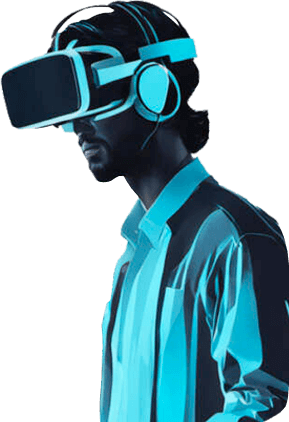Understand the Difference Between ARKit vs ARCore
ARKit excels in high-definition AR experiences, using 4K video and HDR, excelling in video editing and interactive media. It’s built for iOS, targeting sophisticated apps leveraging the potential of advanced models like iPhone X and iPad Pro. ARCore, with both Android and partial iOS compatibility, focuses on scaling across the Android ecosystem and geospatial AR experiences. It is recommended for geographical and large-scale implementations.

Key Differences Between ARKit and ARCore
- ARKit supports 4K video capture and HD background image capture, while ARCore doesn’t provide these features.
- ARKit is exclusive to iOS devices; ARCore works with a wide range of Android phones and some iOS devices.
- ARKit uses Visual Inertial Odometry technology, beneficial for interactive apps; ARCore leverages multiple APIs for environment sensing and interaction with information.
- ARCore, with its Geospatial API and collaborations with Google Maps, excels in geographical and outdoor AR experiences, which ARKit does not directly address.
- ARKit releases updates with each iOS update whereas Google Play Services are automatically updated for ARCore.
| Comparison | ARKit by Apple | ARCore by Google |
|---|---|---|
| Developer | Apple Inc. | Google Inc. |
| Initial Release Year | 2017 | 2017 |
| Platform Compatibility | iOS devices | Android & iOS devices |
| Key Features | 4K video capture, HDR video support, simultaneous front & back camera use, scene geometry, people occlusion, motion capture | Motion tracking, environmental understanding, light estimation, Geospatial APIs, Scene Semantics API, Google Maps Integration |
| Enhancements in Latest Version | Expansion of Location Anchors, high-resolution background image capture, improvements in motion capture, increased physical object recognition | Streetscape Geometry API, Geospatial Depth, Scene Semantics API , AR experiences on 1.4 billion Android devices and select iOS devices |
| Hardware Requirements | iOS device, good lighting, flat surface | Android 7.0 (Nougat) and later, iOS devices |
| Potential Applications | gaming, shopping, AR navigation, industrial sectors | gaming, shopping, AR navigation, industrial sectors |
| Future Prospects | increased usage in various sectors due to advances in iPhone X and iPad Pro models, AR navigation potential in retail and distribution centers | wider AR experience due to collaborations with manufacturers like Samsung, Huawei, ASUS, LG; issues with Google Maps live view compatibility |
What Is ARKit and Who’s It For?
ARKit is a groundbreaking Augmented Reality platform developed by Apple that has revolutionized the way we interact with technology. Introduced in 2017 as part of iOS 11, ARKit uses Visual Inertial Odometry technology to introduce virtual objects into the users’ real-world environment. Primarily used in gaming applications, supported by the latest iPhone X and iPad Pro models, ARKit’s use is rapidly expanding across various sectors, from shopping and industrial applications to social media apps. The platform is best suited for iOS users who can exploit the massive potential of AR technology without the need for additional hardware.

Pros of ARKit
- Supports 4K video capture for immersive AR experiences
- Regular updates with each iOS update
- Wide application across multiple sectors, especially gaming
- Utilizes existing iPhone camera, processors, and motion sensors, eliminating need for additional hardware
Cons of ARKit
- Requires environments with good lighting and a flat surface for visual odometry
- Constant reliance on camera and other sensors can impact battery life
- Primarily useful only for iOS users
What Is ARCore and Who’s It For?
ARCore is a high-powered augmented reality platform developed by Google, providing users with immersive experiences and significantly enhancing the reality perception of mobile devices. Harnessing sophisticated APIs, ARCore is not limited by hardware constraints and scales swiftly across the Android ecosystem, advancing functionalities such as motion tracking, environmental comprehension, and light estimation. While initially introduced for Google Pixel and Samsung’s S8, ARCore is designed for a wide array of Android phones and select iOS devices, further extending the reach of augmented reality experiences to a broad intelligence-hungry audience.

Pros of ARCore
- Provides immersive AR experiences without the need for additional hardware
- Supports a wide variety of Android phones and some iOS devices
- Constant updates and improvements by Google
- Unlocks potential of Google Maps with AR experiences
Cons of ARCore
- Ratings indicate issues with Google Maps live view compatibility
- Reports of unauthorized installing of Google Apps
- May have performance issues on older devices
Code Examples for ARKit & ARCore
ARKit: Plane Detection and Basic Plane Visualization
This ARKit snippet ensures effective plane detection and visualization, showcasing a die-hard example of AR technology at work. Make sure that ARKit is correctly imported and ViewController inherits from the ARSCNViewDelegate. Let’s dive in:
import ARKit
class ViewController: UIViewController, ARSCNViewDelegate {
@IBOutlet var sceneView: ARSCNView!
override func viewDidLoad() {
super.viewDidLoad()
sceneView.delegate = self
sceneView.showsStatistics = true // Show FPS
// Create a new scene
let scene = SCNScene()
// Set the scene to the view
sceneView.scene = scene
}
override func viewWillAppear(_ animated: Bool) {
super.viewWillAppear(animated)
// Create a session configuration
let configuration = ARWorldTrackingConfiguration()
configuration.planeDetection = [.horizontal, .vertical]
// Run the view's session
sceneView.session.run(configuration)
}
func renderer(_ renderer: SCNSceneRenderer, didAdd node: SCNNode, for anchor: ARAnchor) {
guard anchor is ARPlaneAnchor else { return }
DispatchQueue.main.async {
let planeNode = SCNNode(geometry: SCNPlane(width: 1, height: 1))
planeNode.opacity = 0.25
node.addChildNode(planeNode)
}
}
}ARCore: Tracking Image and Overlay an Object
Through this ARCore code snippet, you will learn how to track an image and overlay a 3D object, an AR implementation that can find wide implementation in sectors like retail and education. Make sure that your AR project is correctly configured with the ARCore library and the AR image database is properly set up.
import com.google.ar.core.Config;
import com.google.ar.core.Session;
...
protected Config getSessionConfiguration(Session session) {
Config config = new Config(session);
if (!setupAugmentedImageDatabase(config, session)) {
Log.e(TAG, "Could not setup augmented image database");
}
return config;
}
private boolean setupAugmentedImageDatabase(Config config, Session session) {
AugmentedImageDatabase augmentedImageDatabase;
Bitmap bitmap;
try {
bitmap = BitmapFactory.decodeStream(getAssets().open("yourARImage.jpg"));
} catch (IOException e) {
Log.e(TAG, "IO exception loading augmented image bitmap.", e);
return false;
}
augmentedImageDatabase = new AugmentedImageDatabase(session);
augmentedImageDatabase.addImage("myARImage", bitmap);
config.setAugmentedImageDatabase(augmentedImageDatabase);
return true;
}
//Track Image and overlay 3D object
@Override
public void onUpdate(FrameTime frameTime) {
Frame frame = arFragment.getArSceneView().getArFrame();
Collection<AugmentedImage> updatedAugmentedImages = frame.getUpdatedTrackables(AugmentedImage.class);
for (AugmentedImage augmentedImage : updatedAugmentedImages) {
if (augmentedImage.getTrackingState() == TrackingState.TRACKING) {
if (!augmentedImage.getName().equals("myARImage")) {
add3DModelToScene(augmentedImage.createAnchor(augmentedImage.getCenterPose()), Uri.parse("model.sfb"));
}
}
}
}ARKit VS ARCore: Powering Your Augmented Reality Vision
Let’s dive into the potential winners in AR domain for different creators.
FOR GAME DEVELOPERS
ARKit is your holy grail with its superior Motion Capture, direct camera control, RealityKit2 rendering and advanced gaming iPhone and iPad Pro models compatibility. It shows groundbreaking innovations like Green Screen effect, unseen in ARCore.

FOR SOCIAL MEDIA APPLICATION DEVELOPERS
The hyper-realistic AR experiences with high-resolution image capture, 4K video, and simultaneous use of front and back camera make ARKit a clear choice. Allowing unique interactions using facial expressions, ARKit soars above ARCore.

FOR GEO-LOCATION BASED APPS
ARCore stands strong with its Geospatial API and Streetscape Geometry API. If your apps need to interact with real-world locations, trust ARCore’s broad Geospatial capabilities.

FOR MASS MARKET REACH
Aiming for wider Android and select iOS market? ARCore, with its broad compatibility and automatic updates, becomes a preferred choice for massive market penetration.

When it comes to high-end features and hyper-realism, ARKit steals the show. For geographical interactions and wider market reach, ARCore has an edge. Your choice between ARKit and ARCore truly depends on your APProach.







